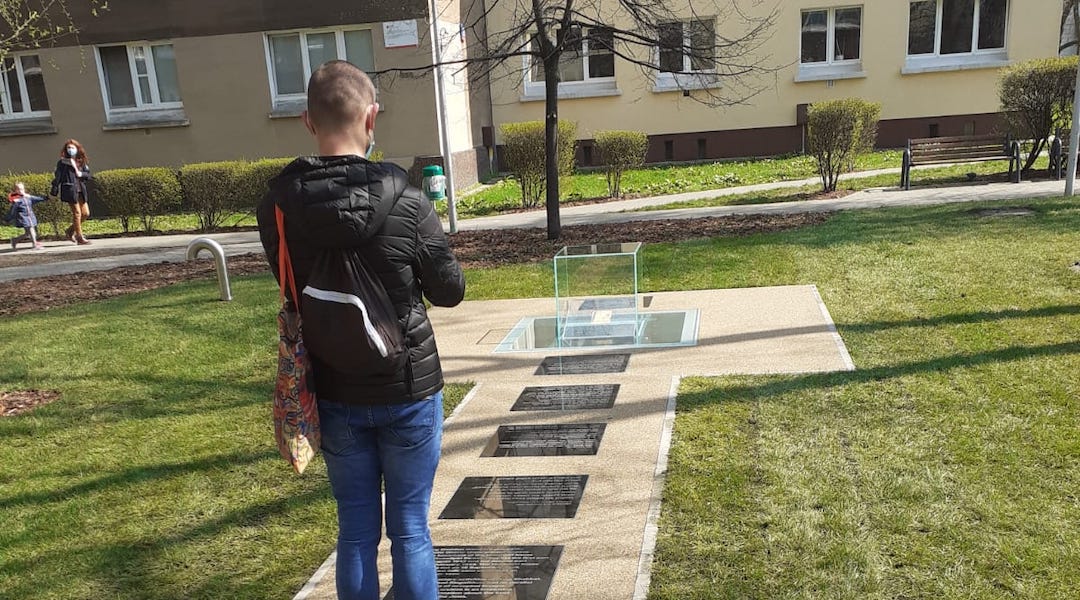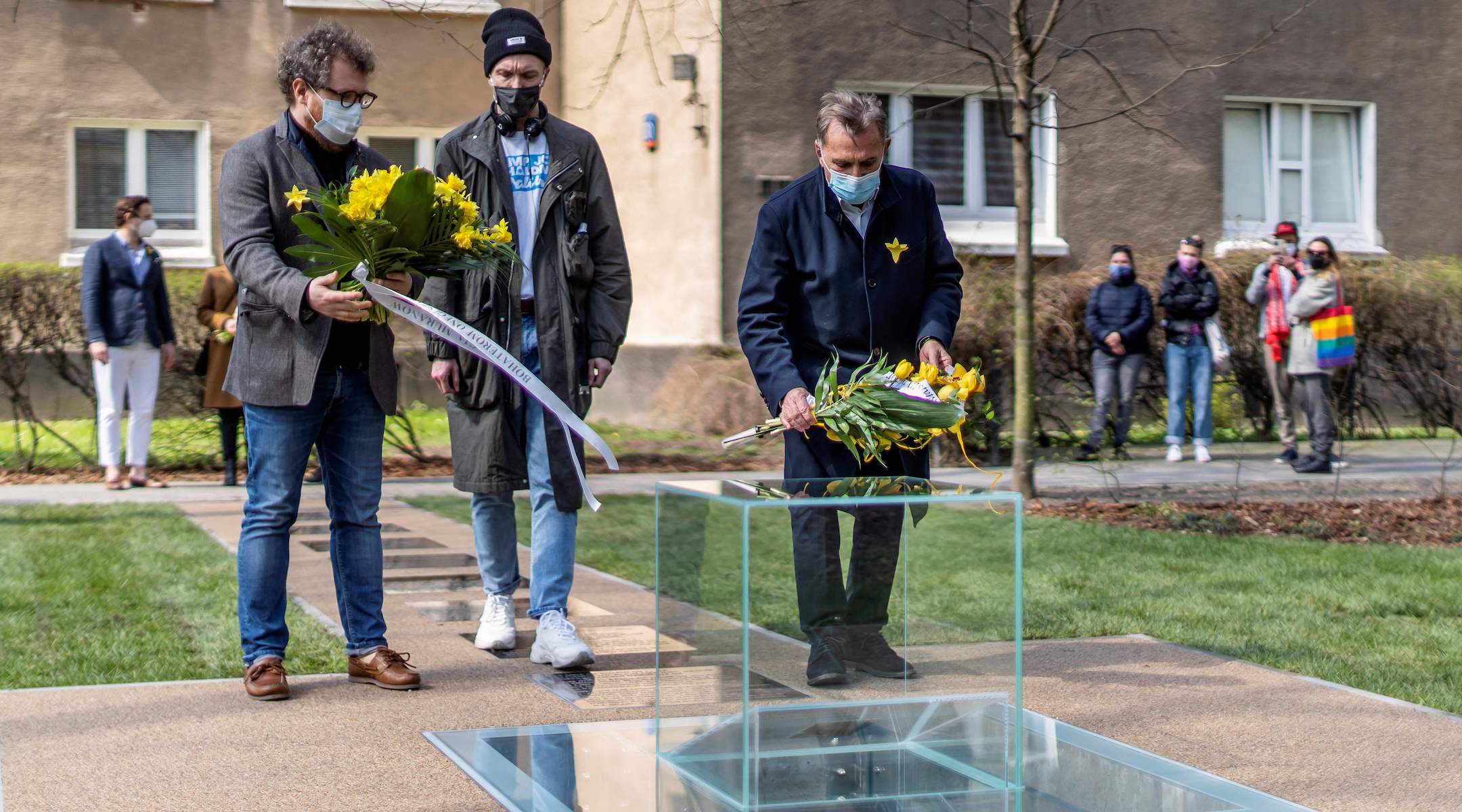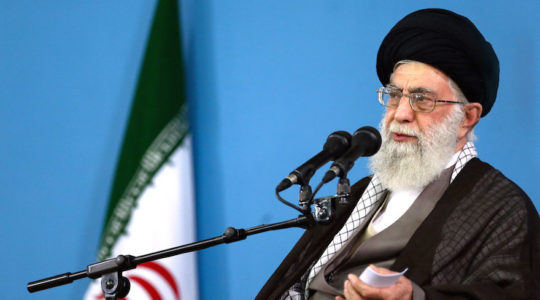WARSAW, Poland (JTA) — A group of Jewish organizations has unveiled a monument marking the area where a group of Jewish writers and activists buried an archive of material documenting their Holocaust experiences.
The commemoration of the Ringelblum Archive was timed to the 78th anniversary of the Warsaw Ghetto Uprising on Monday.
A group of historians, journalists, writers and social activists led by Emanuel Ringelblum and known as Oneg Shabbat collected the material — from reports and diaries to posters, drawings and even candy wrappers — documenting the horrid conditions in the ghetto and hid the cache underground in metal boxes and milk cans. Most of the documents have been found.
The monument at 28 Nowolipki St., designed by Łukasz Mieszkowski and Marcin Urbanek, centers on a transparent cube containing a copy of an archival document.

An onlooker visits the Warsaw memorial unveiled on April 19, 2021. (Katarzyna Markusz)
Due to the pandemic, no official ceremony was organized. But the groups involved in the project — among them the Stacja Muranow Association, which educates locals on Warsaw Ghetto history, and the city’s Association of the Jewish Historical Institute, dedicated to research on the Ringelblum Archive — released an eight-minute video about it on YouTube.
“This is important for Poland, important for Warsaw residents and this is important for the whole Jewish community, wherever it may be,” said Piotr Wiślicki, president of the Association of the Jewish Historical Institute. “During the building of this commemoration, we discovered old artifacts from the Warsaw ghetto times. They will be deposited in a special display cabinet in Jewish Historical Institute.”
Soon after the Nazis invaded Poland in 1939, they forced nearly 500,000 Jews to live in unsanitary quarters in what came to be known as the Warsaw Ghetto. Most were murdered or died of starvation or disease.
There are also plans to honor the Oneg Shabbat group with a monument at Warsaw’s Jewish cemetery, AFP reported.
JTA has documented Jewish history in real-time for over a century. Keep our journalism strong by joining us in supporting independent, award-winning reporting.






